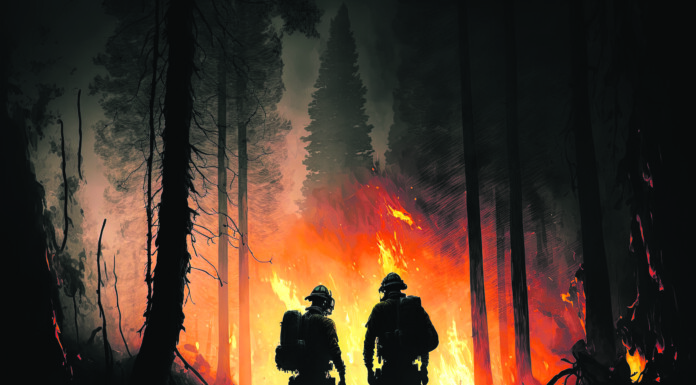The revelation that up to 23 more farms could become permanent carbon forests had Masterton District Councillors sitting up straight last year, and they were not the only ones.
In recent years, rural communities – and rural fire brigades in particular – have watched the growing trend of farmland to forestry conversions with trepidation.
While it is difficult to prove conversion is for the purpose of carbon credits, the threat remains the same, they say – more potential fuel means more risk.
Despite deliberations on excluding exotic trees – notably radiata pine – from the Emissions Trading Scheme, the Government has not ruled them out, and as of January this year, pine forests can still be planted for carbon credits.
Mauriceville Fire Brigade controller Andy Sims said his biggest concern is the prospect of inadequately maintained back-to-back plantations.
Commercial forestry and farmers are generally adept at mitigating fire risk by maintaining essential access to properties and water supplies, but that’s not always the case, he said.
“There’s grass growing among the pine trees in some areas, and if it builds up underneath, you’ll end up with a massive fuel load.
“If they’re just planting up and leaving, who is maintaining access to those areas?
“You only have to look at what happens in Australia.
“Pine burns pretty well, and if you get a hot, dry summer, it’s a fire waiting to happen.”
In May 2021, the Overseas Investment Office [OIO] confirmed six Wairarapa farms had been sold to forestry.
Last year the Times-Age reported Austrian company Cerbeus Vermogensverwaltung had purchased two large properties for forestry conversion – the 1500-hectare Birch Hill in South Wairarapa, and Earlyhurst, a 944-hetare farm near Masterton.
Sims said as a farmer he understands the appeal – “if you’re selling your farm you want the most money for it” – and anticipates the type of rapid conversion that is taking place in the eastern hills near Tinui happening in his patch.
Tinui Fire Brigade controller Donna Schofield said it’s an issue that keeps her up at night.
“I spoke to someone last week who said five farms have been picked up recently by a forestry company and they are all linked.
“It’s scary to think how far a fire could go with so many forests joining up.”
Schofield said with commercial forestry, the fire risk peaks at harvest time, due to heavy machinery sparking: “They manage that as best they can, but say a neighbour’s uncontrolled burn got into a forest?”
And the issue of farm-to-forest conversion goes beyond fire risk, Schofield said.
“Farmers make up 85 per cent of my brigade. But with sheep and beef farms going to forestry, you wonder if you’ll soon have the brigade on the ground to respond.”
From the fire brigade’s perspective, local knowledge is essential, she said.
“Knowing where the forests are and where they are going to stop is key, so we can have a plan to tackle a fire.”
Wairarapa group manager Craig Cottrill said Fire and Emergency [Fenz] is aware changing market conditions means rural landowners are exploring options like forestry.
In the past year, was one significant vegetation fire in a block in the region and “risk reduction conversations were had with the land owners onsite”.
The 2018 Forest Fire Risk Management Guidelines remained relevant, Cottrill said, and Fenz works with forestry landowners to reduce fire risk and ensure brigades are familiar with forestry blocks.
Juken New Zealand Limited’s [JNL] national manager of forests, Sean McBride, said many foresters work to a best practice model from the New Zealand Forest Owners Association’s fire risk management guidelines, but they are not compulsory.
McBride, also chair of the joint Fire Committee for New Zealand Forest Owners and Farm Forestry Associations, said there re varying degrees of engagement with the guidelines.
However, JNL takes the guidelines incredibly seriously, even if it costs the company more, citing risk assessments for adequate water supply and limed fire bands to prevent a fire from spreading.
McBride said the added fire risk from an increase in forests – either for production or carbon – is hard to quantify but noted carbon forestry conversions are more likely in isolated areas.
However, research is underway to assess the risk of ignition within permanent carbon forests and their fire potential.
“No one knows the true risk; considering the summer we’re having at the moment, the risk of wildfire is a lot lower than normal.”
McBride said all land users, including carbon foresters, should be assessing the risk and taking appropriate measures to minimise the risk to their properties and those surrounding them.
Fire risk management is not currently a condition of Greater Wellington Regional Council resource consent.
- Additional reporting by Mary Argue


